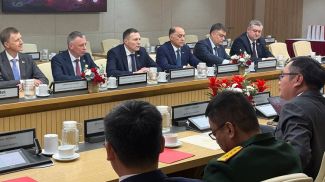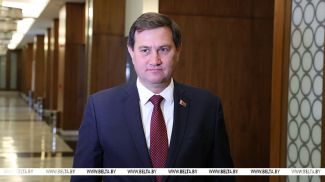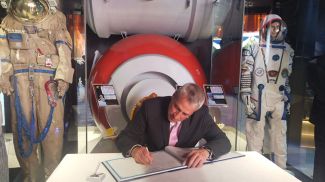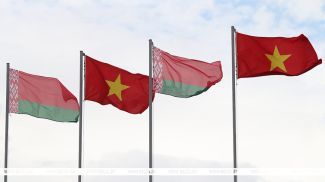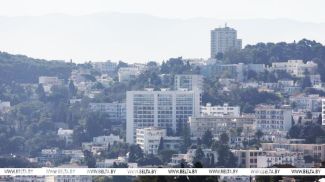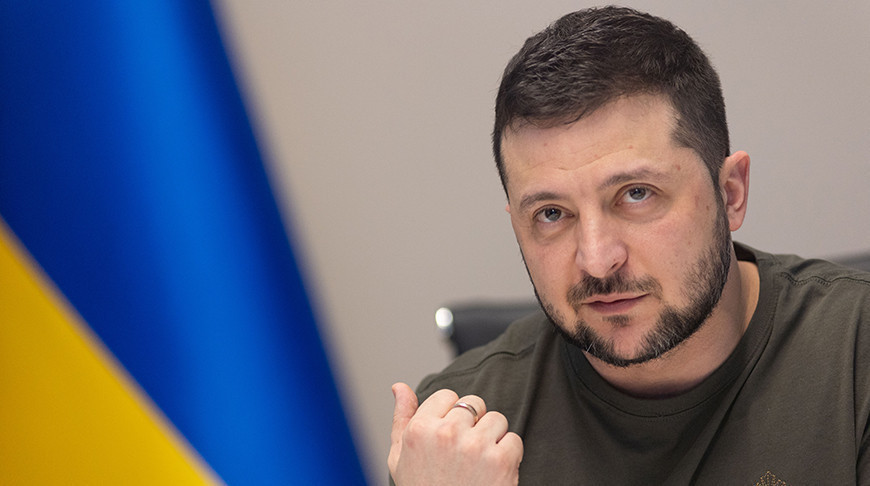
Zelensky's "victory plan" has been the talk of the town for a long time. Some of its points were made public by the Western media. In particular, they reported about Ukraine's hopes to get NATO invite even before the end of the conflict with Russia as well as the permission to use Western long-range weapons.
Apparently, these initiatives did not spark much enthusiasm among Kiev's Western partners. It was expected that Zelensky's plan would be considered on 12 October at a Ramstein meeting of the leaders of the United States, the UK, France and Germany. However, the summit was postponed. According to the official version, it was due to bad weather in the United States.
Meanwhile, the mainstream Western media began to churn out the publications that a peaceful settlement of the Ukrainian conflict may not be such a bad idea, given the inability of the Ukrainian army to achieve the goals set by the West and the unwillingness of the West itself to continue investing in the knowingly unprofitable project.
After the cancellation of the Ramstein meeting, Zelensky visited several more European capitals. But, remarkably, the "victory plan" was never presented in the West. It is likely that the European allies simply did not want to have anything to do with Zelensky's "victorious" initiatives.
The 'victory plan' was presented today during Zelensky's speech in the Verkhovna Rada. According to the Ukrainian publication Strana, Zelensky told the MPs that his plan would become a 'bridge to the peace summit'. It offers a blueprint for ending the Ukrainian conflict no later than 2025.
Zelensky's plan has five points. The first point provides for Ukraine becoming NATO member even before the end of the conflict. The second point envisages the continuation of operations on the territory of Russia and the lifting of restrictions on the use of Western long-range weapons for strikes on Russian territory. This point also includes a proposal to shoot down Russian missiles and drones together with Western partners, as well as the provision of satellite and intelligence data in real time by Ukraine's allies.
The third point envisages the deployment of a 'non-nuclear deterrent package' on the territory of Ukraine. According to Zelensky, this point has a secret addition that was submitted to the leaders of the USA, Great Britain, France, Italy and Germany.
The fourth point provides for the development of Ukraine's strategic and economic potential and the toughening of sanctions against Russia. By potential Zelensky means natural resources, including 'critically important metals worth trillions of US dollars'. Zelensky is ready to share these resources with allies. In particular, 'to conclude a special agreement on the joint protection of critical resources in Ukraine, joint investment and use of the economic potential'.
The fifth point deals with the post-war period. It reads that after the end of the conflict, the Ukrainian military might use their experience to boost the defense capabilities of NATO and Europe. The the Ukrainian military will be able to replace the US contingent in Europe.
Zelensky raised the topic of peace talks in his speech. He noted that in private conversations Western partners are increasingly talking about negotiations, rather than about justice for Ukraine. “We hear from some partners the word 'negotiations', while the word 'justice' is mentioned much less often. Ukraine is open to diplomacy, but to genuine diplomacy, from a strong position. Therefore, we have a 'peace formula'. This will guarantee that negotiations will not force Ukraine to accept injustice,” Strana quotes Zelensky as saying.
In actual fact after the first two points of Vladimir Zelensky’s plan were revealed, it makes no sense to talk about negotiations. The words that an invitation for Ukraine to join NATO can be fundamental for peace are hard to describe as nothing but lies. Ukraine’s neutral status is actually Russia’s key requirement. If this requirement is not met, there will be no negotiations and no peace. Strikes against Russia using long-range weapons, the contribution of NATO states to the destruction of Russian missiles already mean the Alliance’s involvement in the Ukrainian conflict followed by a nuclear war. What “non-nuclear deterrent package” means is open to debate. But its deployment in Ukraine’s territory will only contribute to the continuation of combat operations.
On the whole, the first three points are designed to at least prolong the conflict and to at most scale it up. Kiev is ready to pay for assistance with Ukrainian mineral resources and Ukrainian soldiers. The fourth point and the fifth one stipulate that.
The former U.S. intelligence operative Ritter stated that Zelensky and his regime no longer enjoy support even inside the country.
The West may find Zelensky’s promises tempting. It is worth noting that as little as a couple of months ago the U.S. senator Lindsey Graham openly referred to the conflict in Ukraine as a good investment for the USA. In his words, Ukraine has mineral resources of critical importance worth $10-12 trillion. But Republicans, who are unwilling to spend money on ensuring European security, may like the idea of reducing the U.S. contingent in Europe at the expense of Ukrainians.
However, judging from the response of Kiev’s Western partners, possible risks outweigh benefits for now. One should assume that it is primarily Germany and France that are worried about consequences of the escalation the Ukrainian leadership wants Europe to embrace. It is no accident that after Vladimir Zelensky presented the “victory plan”, the German Chancellor Olaf Scholz mentioned readiness to discuss ways of resolving the conflict in Ukraine with Russian President Vladimir Putin.
By and large, Zelensky's "victory plan" and his "peace formula" are both fictional. Kiev understands this very well. It should be assumed that Zelensky has already received feedback on his plan from his Western "friends" long ago. If Kiev had expected to offer the West pleasant bonuses for assistance in the conflict against Russia, they should have chosen a different approach. After all, behind-the-closed-door deals selling Ukrainian subsoil resources would have been a more appropriate strategy.
So why does Kiev need this plan? It is likely that Zelensky simply wants to remove responsibility for the imminent defeat in the ongoing conflict, shifting the blame onto the West. They will say that they tried their utmost and the victory was very close, but their partners let them down.
Certainly, it was Kiev's Western allies who contributed to the escalation of the conflict, made empty promises, and encouraged each and every Ukrainian to continue the conflict. Their guilt is clear. However, it is important to recognize that not the leaders of France or the United States, but the Ukrainian president is responsible for the Ukrainian people. It was Zelensky who made crucial decisions for his state.
Nowadays, the Ukrainian leadership has realized that they are locked in a stalemate. They are looking for ways to save themselves. Not their state, not their people, but themselves. The ongoing conflict is the only opportunity for Zelensky and his close associates to postpone the moment when they will have to take responsibility for their decisions. They will try their best to stay afloat while Ukraine will continue to sink.




